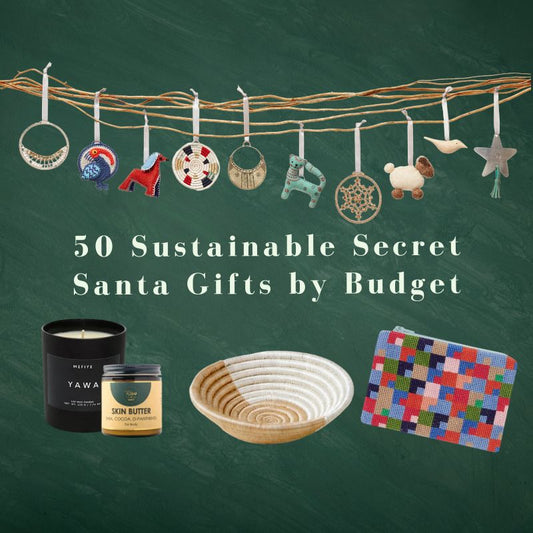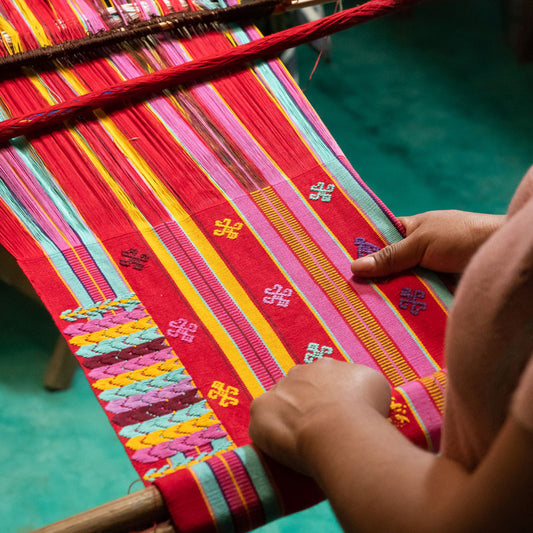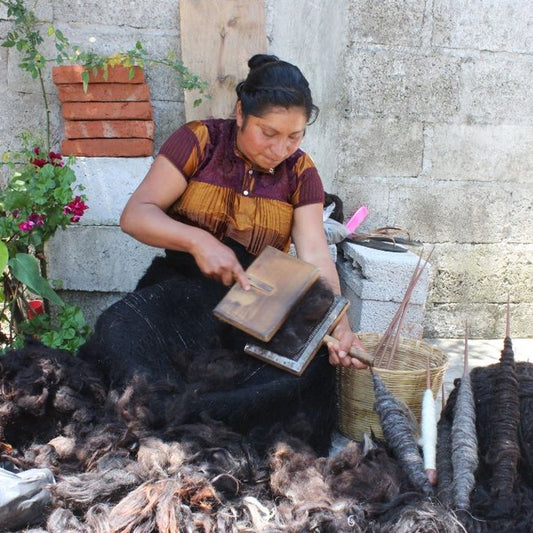Chinasa is the founder and creative director of the gorgeous lifestyle brand, Weruzo. With a background in fashion, curation, art direction and publishing, the cultural entrepreneur is drawn to the ways in which African design and craft can be preserved whilst reflecting modern influences.
In this interview, Chinasa talks about the origins of Weruzo, the endless inspiration that comes from African craft, and shares with us some insider tips for travelling in Nigeria. Weruzo is a collection of ceramic homeware celebrating Africa's rich crafts heritage. Fusing artisanal handcraft techniques with modern design, the brand works in tandem with artisans in Nigeria to preserve cultural heritage and provide dignified work opportunities.
Chinasa, can you share with us a little about the origins of Weruzo?
Well Weruzo is actually from my middle name ‘Weruzochi’ and the brand was inspired by a love of and need to celebrate African cultural and creative histories.
I spent a lot of time as a child travelling around the world (but also Nigeria) before finally settling in England. I was always fascinated by the stories I was told about the melting pot of cultures and artisan skills that existed within Nigeria and Africa at large. However, I didn’t learn very much else about them outside of those stories and conversations and I found myself longing for ways to make them tangible for myself and everyone else.
So when I launched Weruzo, as a womenswear brand initially, I worked with artisans using weaving skills that had been passed down for generations and were fading into obscurity. Preserving those skills was as important as making beautiful pieces and showcasing that the craftsmanship from those regions was equally as valuable as craftsmanship from the West.
How did you pivot from your career in fashion and art to being a brand owner?
I still see my work as art, so I definitely haven’t left art behind, but the decision to pivot from fashion was quite straightforward. I had just finished a show at the ICA for my womenswear line and while it was successful in terms of turnout and reviews, I realised that, ultimately, the brand wasn’t scalable in that format.
I knew I wanted to continue with the ethos of the brand, creating beautiful and quietly distinctive pieces; working with artisans and preserving traditional skills that were dying out as well as providing dignified working opportunities for those artisans. Homeware was an instinctive choice because I had always planned on expanding into that field. And I knew the craftsmanship of artisans I had visited meant that we could create special pieces that told a story.
"When I launched Weruzo, I worked with artisans using weaving skills that had been passed down for generations and were fading into obscurity. Preserving those skills was as important as making beautiful pieces and showcasing that the craftsmanship from those regions was equally as valuable as craftsmanship from the West."

Who or what do you draw on as inspiration for your designs?
My inspiration predominantly comes from African craft and cultural histories. There are so many stories, mythologies and histories that I learn about everyday that inspire me. But it’s also the little things, the everyday things that resonate with me. The way stories are passed down orally or written into songs which make music so important to us, or the way we gather for celebrations and the rituals we incorporate into them. I’m always humbled by how much I learn from casual conversations with the people I meet and there’s always something to spark the next collection. The inspiration is endless and I’m grateful for it.
You have created the Celestine collection with minimal carbon footprint in mind. How did you manage to achieve this?
Growing an ethical and sustainable business is something that is really important to me. Climate change is a real issue that we all need to do our part in finding a solution to. I grew up with parents that were very conscious of our environment and so it’s intrinsic to me to try to be as sustainable as possible. We could always find a use for things even if they could no longer serve their original purpose.
The truth is creating stoneware uses a lot of energy especially during firing, so we work really hard to mitigate our footprint everywhere else. Our stoneware pieces are made using clay made locally. Our packaging is 100% recyclable, and we pay a little extra to make sure our shipping is carbon neutral. We continue to follow new innovations in production and packaging and will implement them as they are introduced to us.
"I’m always humbled by how much I learn from casual conversations with the people I meet and there’s always something to spark the next collection. The inspiration is endless and I’m grateful for it."
What advice can you give aspiring makers and designers about launching a business?
I’d say follow what fulfills you and take risks. It won’t be easy everyday, in fact it’ll probably be difficult and complicated and exhausting most days. But if you commit to it and stay determined then it pays off.
Do you have any tips for seeing the “non touristy” parts of Nigeria and for travel around the region?
The main tips I would give are to make friends with the locals if you’re visiting anywhere a little outside the cities and try to have someone take you around. Always have some cash as it’s still mostly a cash economy outside the big cities and be respectful of peoples cultures and traditions.
I tend to stay in Abuja and travel out from there so some of my favourite places are there. I love Shawarma King in Maitama, though my favourite thing to eat is probably Suya from a local vendor (which always tastes better at night). Finally, I’d recommend a visit to Nike’s Art Center in Abuja – the architecture and space is stunning and feels like a microcosm of Nigerian craft.

Weruzo’s debut collection – “Celestine” – takes inspiration from the instruments used in African folk music traditions. Featuring curvaceous vases and expressive candelabras, each ornament is sculpted by hand and twice fired to create an unglazed, textured finish. Discover and shop the range here.
Images from @chinasa and @weruzo



